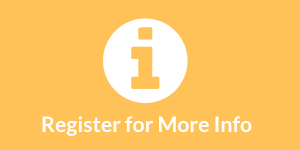What Are Some More Benefits Companies See from Self-Service BI Solutions?
This is a continuation of the transcript of a Webinar hosted by InetSoft entitled "Why Self-Service BI?" The speaker is Mark Flaherty, CMO at InetSoft.
Mark Flaherty (MF): The kind of interactivity available in software such as InetSoft's will give your self service business intelligence a new life and attract more attention and usage – when compared to the static tabular reports that users became used to. So they are likely to become more engaged and pull more actionable observations out of the data.
With most organizations, 80% of information that is requested by the business for day to day work can now be standardized. And the remaining 20% can be obtained with some adjustments to the standardized reports or exploratory dashboards.
The benefit of standardization for IT includes reduces ad hoc requests by about 85%, on average. An IT budget can be cut by up to 60% by a self-service BI implementation.
Automated decision-making or at least automated alerts when a decision is necessary can produce savings in cycle time. Business users have more confidence in their decision-making because all the necessary self service data preparation is available to them.
| #1 Ranking: Read how InetSoft was rated #1 for user adoption in G2's user survey-based index | Read More |
What are the benefits of a single BI reporting tool standardization across an enterprise?
The learning curve for business users is simpler. They have only one tool to learn, and they can turn to other people in any part of the company for help when needed. There’s savings from internal training of business users. You can also get better support from your chosen BI vendor since they are getting more license sales as a result.
What is agile BI?
Agile is not a feature in software. It is a mindset and a process. Like any process, it depends heavily for success on people and the organizational culture in which it is being implemented. The roots of agile began in early 2000 with the agile manifesto, but its true roots go back even further in that it borrows from the core principles of lean manufacturing made famous by companies such as Toyota. Just in time, bottlenecks, continuous flow, total quality management, elimination of mudda (waste), and continuous improvements have their roots in the lean movement and these concepts have worked their way into agile.
InetSoft aims to support agile BI, and in fact, we were the first to incorporate it in our tagline "Easy, Agile, Robust." In our software, the direct data access models built with InetSoft's patent-pending Data Block technology, as well as the dashboards and reports are all self-service enabled. This accommodates both formal and experimental changes to a level that is unique in the BI space. In addition, our ad hoc reporting tools use a drag-and-drop interface based on simplified data models you choose. And the visualization techniques of highly interactive dashboards encourage and facilitate data exploration through multi-dimensional charting styles and point and click filtering and sorting.
Is Agile BI Related to Self-Service BI?
Yes, Agile Business Intelligence (BI) and Self-Service BI are related concepts, and they often overlap in modern data strategies. Both aim to make BI processes faster, more efficient, and more user-friendly, but they address slightly different aspects of the BI ecosystem. Here's how they are connected and how they differ:
Agile BI
Agile BI refers to the methodologies and practices that emphasize flexibility, speed, and iterative development in BI projects. Its foundation is inspired by Agile software development, with a focus on continuous delivery of value to business users through iterative updates and refinements. Agile BI encourages collaboration between business users and IT professionals to adapt to changing requirements quickly.
Key Characteristics:
- Iterative Development: Delivering BI solutions in smaller, manageable chunks rather than a massive rollout.
- Faster Time-to-Insight: Rapid prototyping, reducing the time it takes to generate actionable insights.
- Close Collaboration: Strong interaction between technical teams and business users for feedback and refinement.
- Adaptability: Adjusts to new business demands or data requirements without significant downtime or delays.
Self-Service BI
Self-Service BI focuses on empowering business users, particularly non-technical ones, to explore, analyze, and visualize data independently, without relying on IT or data analysts for routine reporting needs. It democratizes access to data and tools, enabling faster decision-making.
Key Characteristics:
- User Empowerment: Tools are designed to be intuitive, allowing users to work without technical expertise.
- Ease of Access: Simplifies data integration and visualization through drag-and-drop interfaces and pre-built templates.
- Reduced IT Bottlenecks: Minimizes dependency on technical teams for routine data requests.
- Real-Time Insights: Enables on-the-fly data exploration to respond to immediate business questions.
How Are They Related?
- Shared Goals: Both Agile BI and Self-Service BI aim to speed up the time-to-insight and enhance decision-making by reducing reliance on lengthy traditional BI processes.
- User-Centric Approach: Both prioritize the needs of end-users, whether by enabling collaboration (Agile BI) or providing easy-to-use tools (Self-Service BI).
- Technology Overlap: Many modern BI platforms, like Tableau, Power BI, or InetSoft, incorporate features that support both agile methodologies and self-service capabilities. These platforms often provide iterative development tools for IT teams alongside user-friendly dashboards for business users.
- Reduced IT Bottlenecks: Agile BI's iterative cycles and Self-Service BI's user autonomy both alleviate pressure on IT resources by enabling faster responses to changing business needs.
Key Differences
| Aspect | Agile BI | Self-Service BI |
|---|---|---|
| Primary Focus | Processes and methodologies | Tools and user empowerment |
| Target Audience | BI developers, IT, and analysts | Business users and end-users |
| Delivery | Iterative development cycles | Direct access to data for users |
| Dependence on IT | Requires active IT involvement | Minimizes IT involvement |
| Previous: Business Users of a New BI System |


